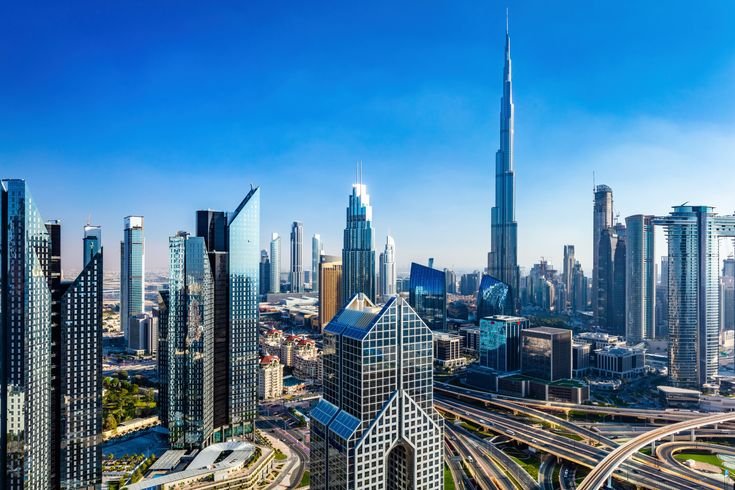Dubai is a city synonymous with futuristic skylines, luxury, and bold architectural statements. While the Burj Khalifa often steals the spotlight as the tallest building in the world, Dubai is home to a myriad of architectural marvels that often go unnoticed by tourists and even locals. From sustainable skyscrapers to culturally inspired designs, the city represents a fascinating blend of modern engineering and traditional artistry. Exploring these lesser-known structures not only highlights Dubai’s innovation in construction but also reflects the vision of urban planning that balances aesthetics, functionality, and sustainability. Understanding these marvels offers insight into how architecture can shape a city’s identity and inspire global admiration.
1. Cayan Tower: The Twisting Wonder
One of Dubai’s most intriguing modern buildings is the Cayan Tower, also known as the Infinity Tower. Standing at 306 meters with 75 floors, this residential skyscraper twists a full 90 degrees from base to top. The unique design reduces wind forces on the building, demonstrating how architectural innovation can merge beauty with engineering practicality.
The twisting structure also showcases parametric design principles, where computer algorithms guide the shape and form for both aesthetic appeal and structural efficiency. Cayan Tower’s innovative approach has influenced skyscraper designs worldwide, showing that function and art can coexist in urban architecture.
2. The Opus: A Cultural and Artistic Statement
Another hidden gem in Dubai’s architectural landscape is The Opus, designed by the late architect Zaha Hadid. Unlike conventional skyscrapers, The Opus has a fluid, cube-like form with an open center creating a “void” that captures natural light. The building exemplifies biomorphic design, a concept inspired by organic shapes found in nature.
This landmark houses offices, hospitality spaces, and creative studios, illustrating how architecture can facilitate collaboration and creativity. Tourists and locals alike are drawn to its unique silhouette, which seems to float above the ground, challenging traditional perceptions of urban building design.
3. Sustainable Innovations: The Sustainable City
While Dubai is often associated with luxury, it is also pioneering sustainable urban development. The Sustainable City is a community designed with eco-friendly buildings, solar energy systems, and green spaces. It emphasizes the concept of green architecture, which integrates environmental responsibility into building practices.
Sustainable City demonstrates that innovation is not limited to aesthetics; it’s about creating structures that reduce carbon footprints and improve quality of life. With features like energy-efficient homes, recycled water systems, and pedestrian-friendly layouts, this urban marvel shows how architecture can support environmental goals while remaining visually stunning.
4. The Address Sky View: Luxury Meets Engineering
Another noteworthy building is the Address Sky View, which combines twin towers connected by a sky bridge. Standing 302 meters tall, the sky bridge offers panoramic views and luxury amenities. This building illustrates mixed-use architecture, integrating residential, hospitality, and leisure spaces into a cohesive vertical environment.
The Address Sky View emphasizes functionality without compromising luxury. Its sleek, glass-paneled façade reflects Dubai’s skyline, contributing to the city’s overall visual appeal while providing residents with world-class experiences.
5. Integrating Tradition: Alserkal Avenue
Not all of Dubai’s architectural marvels are towering skyscrapers. Alserkal Avenue represents a creative hub housed in repurposed warehouses. It embodies adaptive reuse architecture, where old structures are transformed into functional, modern spaces.
Alserkal Avenue is home to galleries, performance spaces, and cultural institutions. It preserves the city’s industrial heritage while promoting contemporary art and community engagement. This approach demonstrates how architecture can maintain cultural continuity while accommodating urban growth.
6. Travel Considerations: Dubai Visa for Indians
For Indian travelers planning to witness these architectural wonders firsthand, understanding the Dubai visa for Indians is essential. This visa allows Indian nationals to legally enter the UAE for tourism, business, or other purposes. The application process can be completed online or through authorized agencies, and it is advised to apply well in advance to ensure smooth travel planning.
7. Checking Travel Updates: Dubai Visa Status
Once the visa is applied, keeping track of your Dubai visa status becomes important. The status indicates whether your application has been approved, is under processing, or requires additional information. Travelers can easily check this status online through official portals, ensuring a hassle-free experience and timely travel arrangements.
Conclusion
Dubai’s architectural landscape is far richer than the iconic Burj Khalifa. From twisting towers like Cayan Tower to artistic masterpieces like The Opus, sustainable communities, and culturally adaptive spaces like Alserkal Avenue, the city is a testament to human ingenuity and innovation. These structures not only define Dubai’s skyline but also set global benchmarks for modern architecture. Exploring them reveals how vision, sustainability, and cultural sensitivity can coexist in urban planning, inspiring architects and travelers alike.
FAQ
Q1: What is the tallest building in Dubai?
- The Burj Khalifa, standing at 828 meters, is the tallest building in Dubai and the world.
Q2: Can Indian citizens visit Dubai without a visa?
- No, Indian citizens require a Dubai visa for Indians to enter the UAE.
Q3: How can I check my Dubai visa status?
- Travelers can check their Dubai visa status online via official government portals using their application reference number.
Q4: Are there eco-friendly buildings in Dubai?
- Yes, examples include the Sustainable City, which integrates solar energy, green spaces, and environmentally responsible design.
